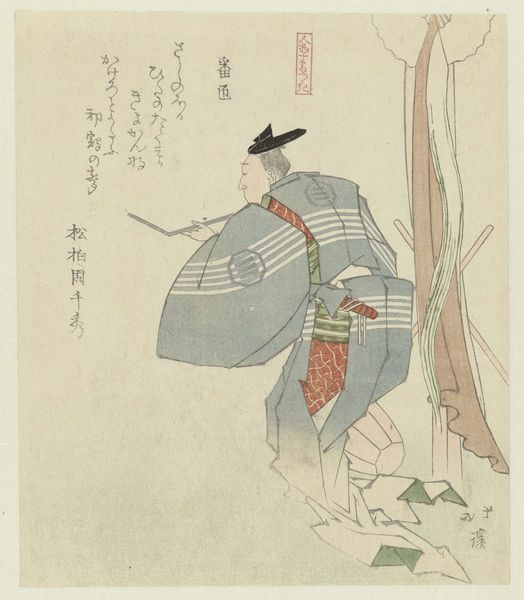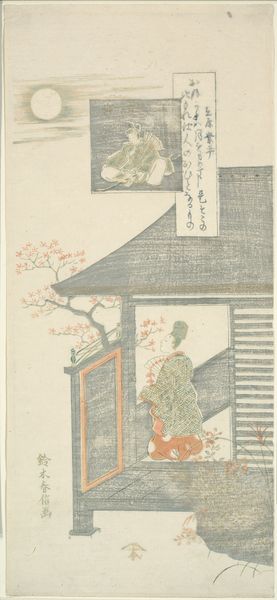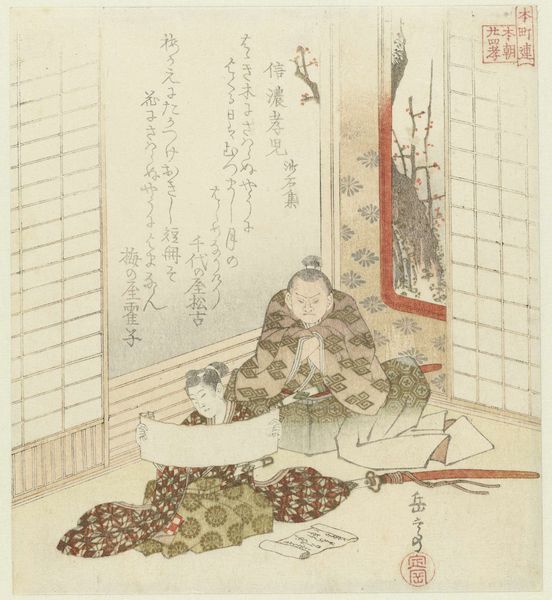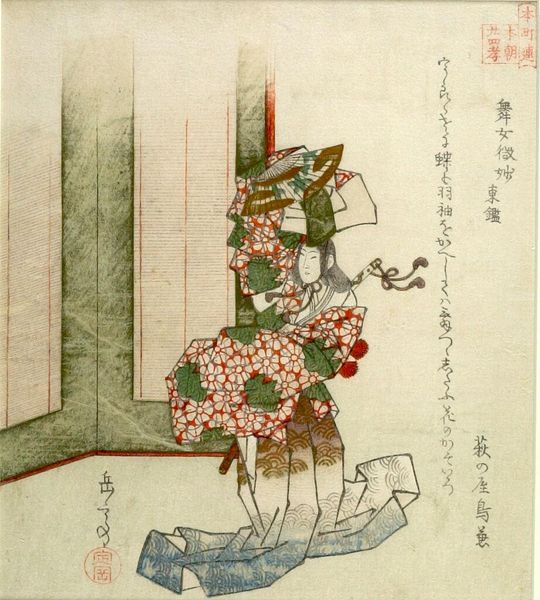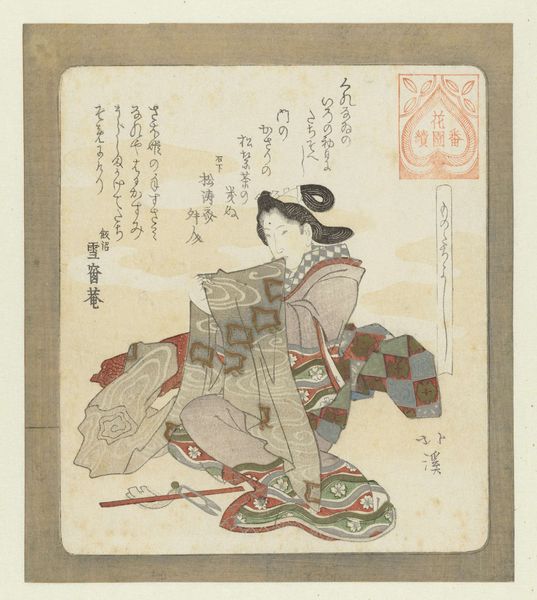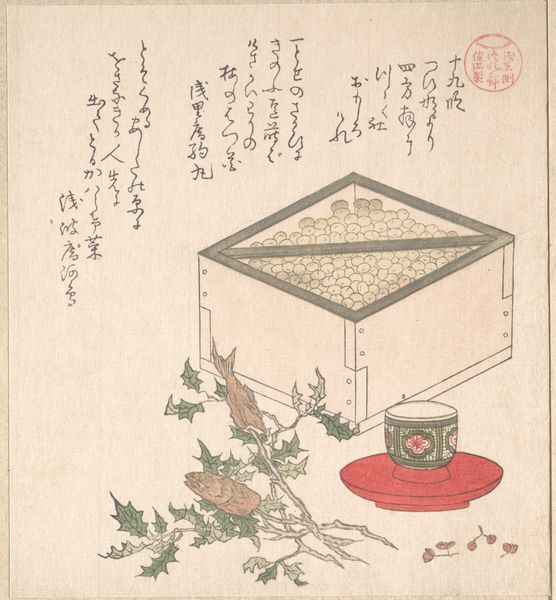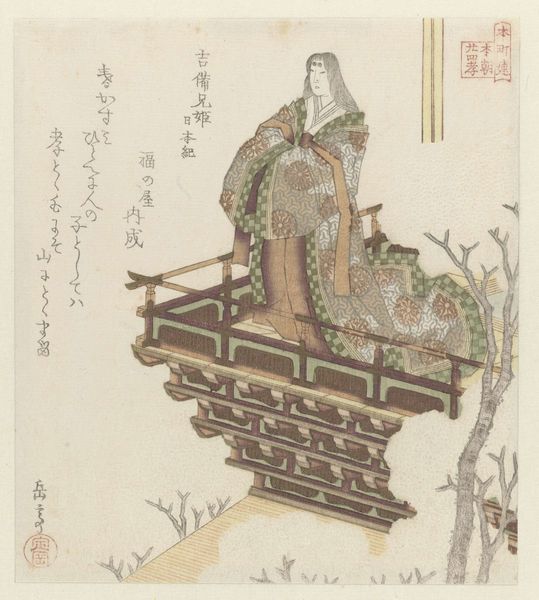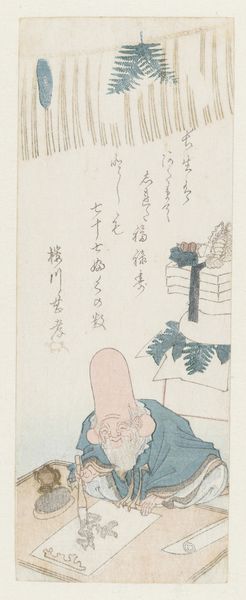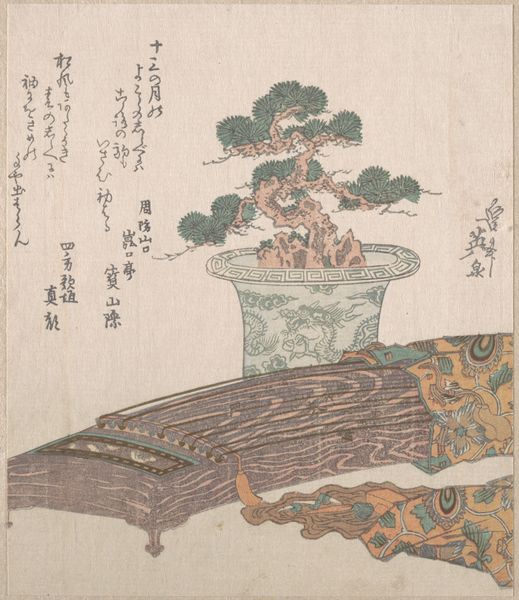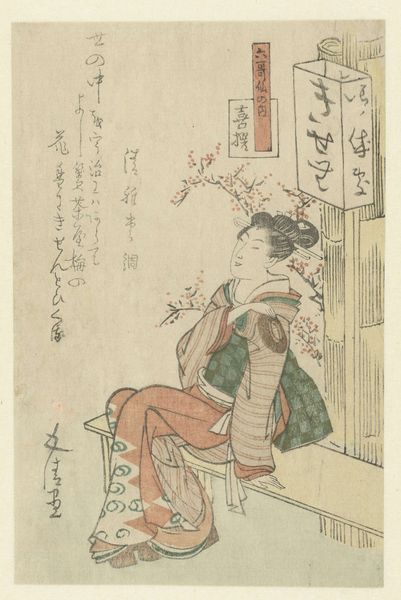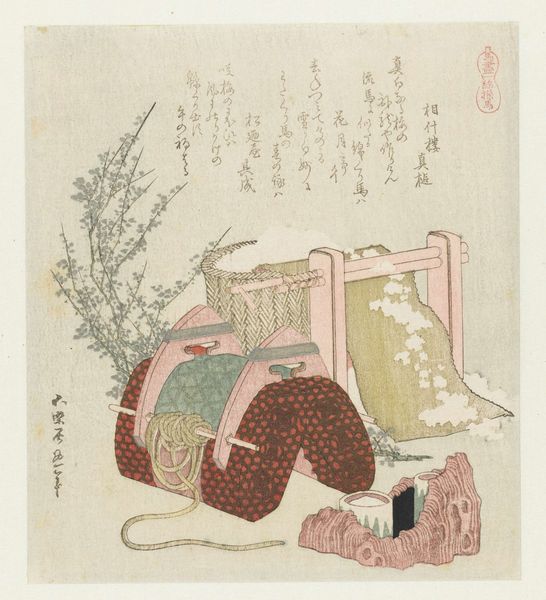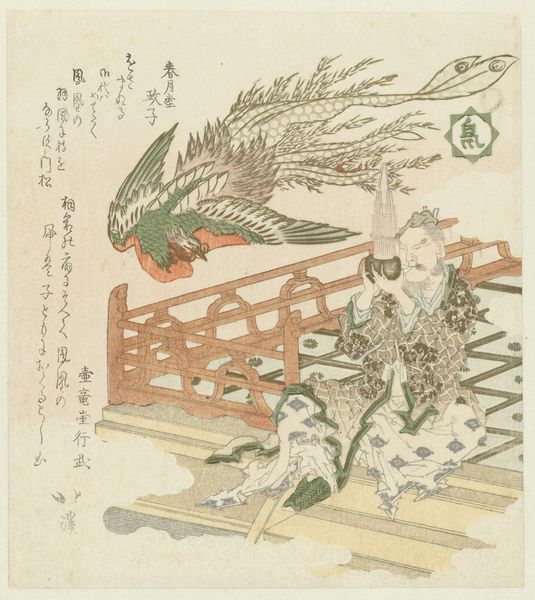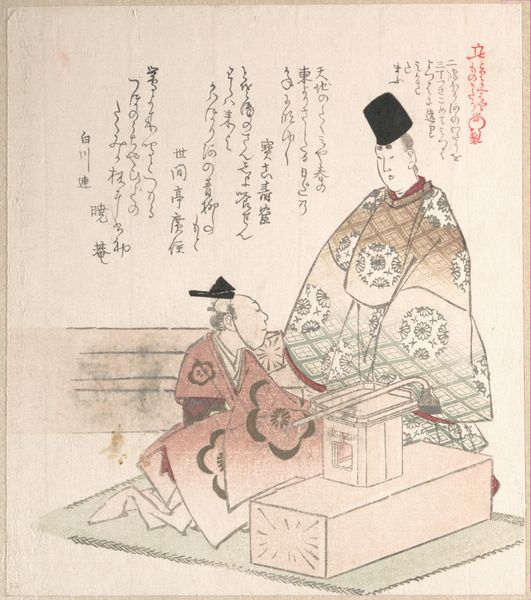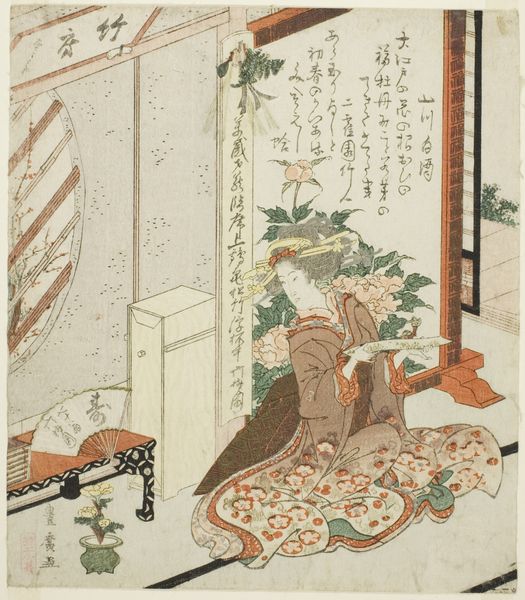
Twenty-four Japanese examples of filial piety for the Honchôren c. 1821
0:00
0:00
drawing, print, ink
#
drawing
#
blue ink drawing
# print
#
asian-art
#
ukiyo-e
#
figuration
#
ink
Dimensions: height 203 mm, width 182 mm
Copyright: Rijks Museum: Open Domain
Curator: Welcome to the Rijksmuseum. We're standing before "Twenty-four Japanese examples of filial piety for the Honchōren," a print made around 1821 by Yashima Gakutei. It explores the theme of filial piety, a core Confucian value in Japanese society at the time. Editor: My initial reaction is that this image feels surprisingly flat. The limited color palette—mostly muted greens and browns—creates a serene, almost melancholic mood, yet the elaborate patterns add a sense of dynamism, don't they? Curator: Precisely. Gakutei created this print amidst the Bunka-Bunsei era, a time when the Ukiyo-e art form was experiencing both popular enthusiasm and facing censorship due to sumptuary laws trying to control extravagance. Consider how prints became avenues to navigate complex socio-political sentiments through allegory and historical reference. Editor: The patterns, while beautiful, strike me as almost geometrically overwhelming. They compete for attention, flattening the depth. See how the wavy lines on the lower part of the kimono mimic the horizontal lines on the sliding door, which enhances that feeling of compressed space? Curator: The subject here, however, is no ordinary geisha but embodies a virtue lauded by the ruling elite and embraced by commoners in an era struggling to define its ethos amidst nascent capitalist dynamics. Filial piety, or respect for one’s elders, became intertwined with ideological assertions supporting class hierarchies and patriarchal norms. Editor: Yet, the face of the figure appears almost… detached. She doesn't seem emotionally connected to the implied filial duties. Perhaps Gakutei intended that to create an ambiguity, a tension between the expectation and the individual's internal state? Curator: Exactly! Artists were actively responding to and questioning social mandates. These seemingly innocuous prints served to open debates, providing glimpses into cultural dialogues challenging traditional values or reshaping perspectives concerning gender roles and family expectations. Editor: I agree that seeing those complex layers elevates my reading of the image. Thank you for sharing a view on its layered cultural context. Curator: It has been a pleasure offering an art-historical context, enabling deeper appreciation.
Comments
No comments
Be the first to comment and join the conversation on the ultimate creative platform.
